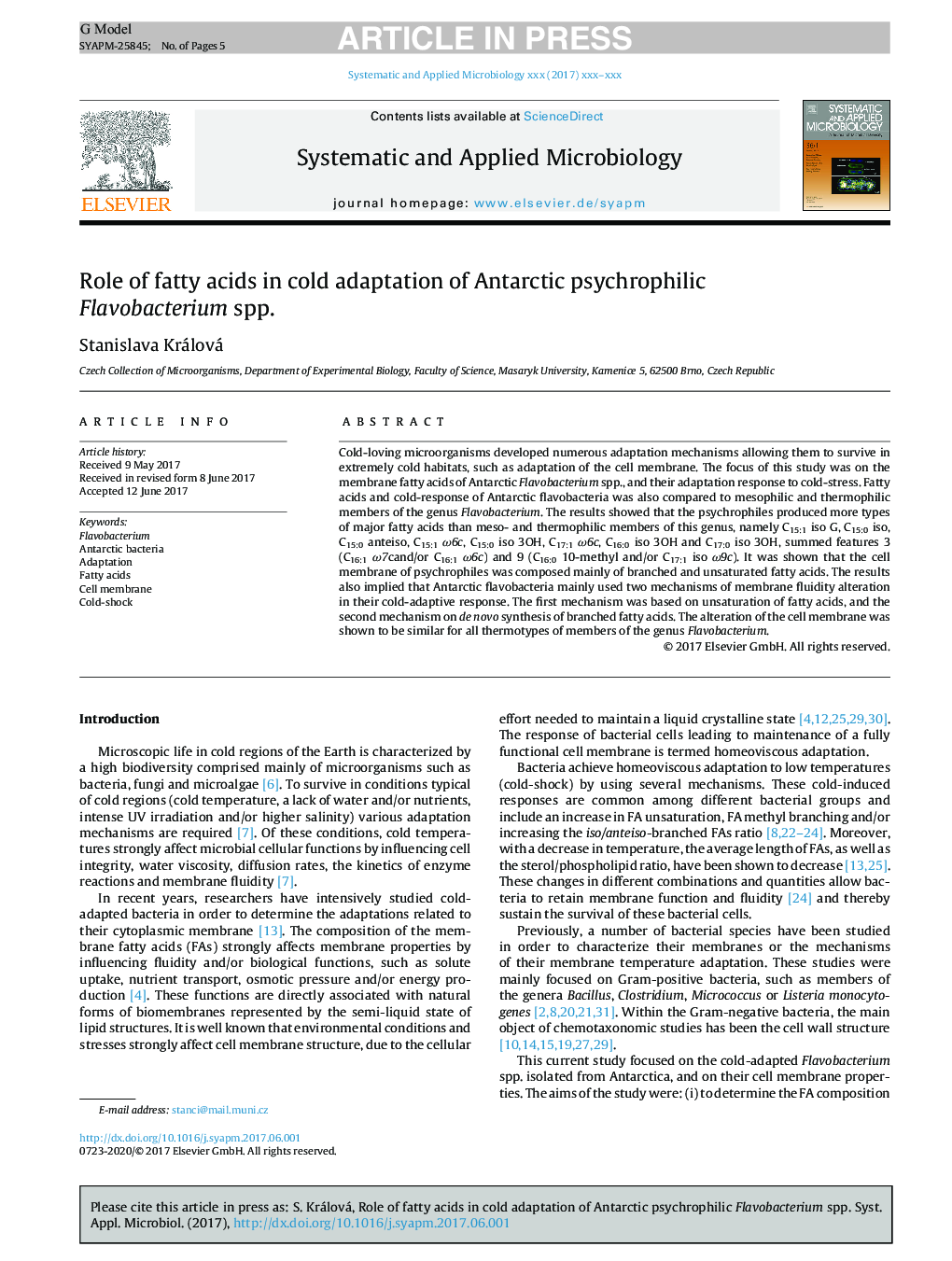| Article ID | Journal | Published Year | Pages | File Type |
|---|---|---|---|---|
| 8393606 | Systematic and Applied Microbiology | 2017 | 5 Pages |
Abstract
Cold-loving microorganisms developed numerous adaptation mechanisms allowing them to survive in extremely cold habitats, such as adaptation of the cell membrane. The focus of this study was on the membrane fatty acids of Antarctic Flavobacterium spp., and their adaptation response to cold-stress. Fatty acids and cold-response of Antarctic flavobacteria was also compared to mesophilic and thermophilic members of the genus Flavobacterium. The results showed that the psychrophiles produced more types of major fatty acids than meso- and thermophilic members of this genus, namely C15:1 iso G, C15:0 iso, C15:0 anteiso, C15:1Ï6c, C15:0 iso 3OH, C17:1Ï6c, C16:0 iso 3OH and C17:0 iso 3OH, summed features 3 (C16:1Ï7cand/or C16:1Ï6c) and 9 (C16:0 10-methyl and/or C17:1 iso Ï9c). It was shown that the cell membrane of psychrophiles was composed mainly of branched and unsaturated fatty acids. The results also implied that Antarctic flavobacteria mainly used two mechanisms of membrane fluidity alteration in their cold-adaptive response. The first mechanism was based on unsaturation of fatty acids, and the second mechanism on de novo synthesis of branched fatty acids. The alteration of the cell membrane was shown to be similar for all thermotypes of members of the genus Flavobacterium.
Related Topics
Life Sciences
Agricultural and Biological Sciences
Ecology, Evolution, Behavior and Systematics
Authors
Stanislava Králová,
